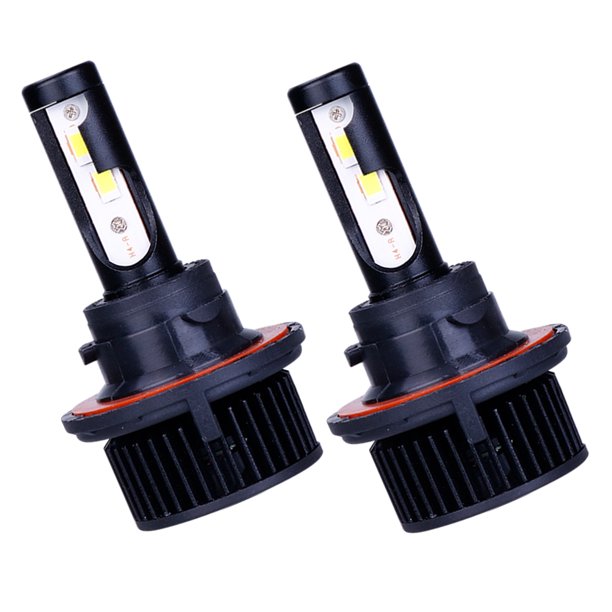You would assume that buying headlight bulbs is a no-brainer, but that’s not true. The different types of bulbs (like H4, H7, and H11) and the many choices (brands, bulb groups, power source, and designs) out there will no doubt overwhelm the uninitiated.
H4, H7, and H11 bulbs are not the same but all belonging to Group 1 lightbulbs per the United Nations’ universal standard for automotive light bulbs. Group 1 means the bulbs can be used for any purpose, but they differ in their filaments, power, and base, so they’re not interchangeable.
Understanding these bulbs and their categorisation can be quite challenging. That’s why this guide will help you understand how those universal classifications work and how they differ from one another.
Let’s get started!
Headlight Bulb Classifications
One can only fully appreciate the differences between the H4 headlight bulb, H7, H11 and any other automotive light bulb by first understanding their broader classifications. With so many different bulb types out there, it's excellent to have a classification system that is understood worldwide.
Like many other universal standards, the United Nations is responsible for the car light bulb classification system that manufacturers use.
Mechanics and car owners use this classification system at one point or another, so it’s for your own good to understand at least which of those bulbs are used in your vehicle. That way, you won’t have much problem shopping around for replacements if you ever need to.
The purpose behind universal standards for automotive light bulbs is to ensure that manufacturers produce standardised bulbs worldwide. It means that no matter what country you’re ordering from, you’ll know that the bulb specs will be the same anywhere else.
Here’s what you need to know.
The United Nations has classified all automotive light bulbs into three groups, namely Groups 1, 2, and 3. Bulbs are sorted into each of those groups according to their purpose, which are the following:
- Group 1: Light bulbs in this category can be used for any part of the car, including headlights and taillights, among others.
- Group 2: The lights in this category are only those used for signalling. In other words, any light used for illuminating the road (e.g. headlights) is not included in this group.
- Group 3: Lastly, light bulbs in this group are the ones not used in newer vehicles, but manufacturers can still produce them as replacements for use in older car models.
One of the most important things to remember here is that the different lights are not interchangeable, even if they belong to the same group. On top of that, they also have significant differences relating to their power and filaments.
So, if you’re looking for a replacement, it’s best to find an identical one compatible with our vehicle’s sockets.
Which Headlight Bulbs Are in Group 1?
As you read earlier, the bulbs in Group 1 include those that are used to illuminate the road, such as headlights. More specifically, the category includes H1, H3, H4, H7, HB3, and HB4, and the H11 headlight bulb.
You guessed it – there are meanings behind the alphabets and numbers used in each lightbulb classification, whether in Group 1 or any of the others.
In Group 1, the 'H' shows that the bulb uses Halogen technology. Simply put, the lightbulb is an improved version of incandescent lighting. It consists of a tungsten filament sealed inside a transparent outer casing filled with a small amount of halogen and other gasses.
The standard for H1 light bulbs was introduced decades ago, in 1961. More standardised Group 1 ‘H’ lightbulbs were designed as the years passed. You could find up to H4 in the 1970s before H7 and H11 became available in the 1990s.
Are H4 And H7 Bulbs Interchangeable?
No, none of these automotive light bulbs is interchangeable despite being in the same group. That means you cannot put an H7 headlight bulb into an H4 socket or any other lightbulb in the same group.
Being in the same group does not mean they’re compatible or interchangeable. Instead, Group 1 includes all lightbulbs used in cars for any purpose. Most notably, the group includes lights for illuminating the road, such as headlights and taillights.
How Are Headlight Bulbs Different From Each Other?
So far, you’ve read that headlight bulbs are different despite being from the same group. They differ mainly based on their base, power, and filaments.
Here’s more about those differences:
- Base: The base is the bottom section of each light bulb that connects with the headlight socket. Those bases are not the same between light bulbs despite being from the same group.
- Power: Even though these headlight bulbs generally produce the same amount of light, they differ in how much power they use to do so. For instance, the thing that sets bulbs apart is how many volts they require to function and how many watts they produce as a result.
- Filaments: Headlight bulbs within the same group can also differ in how many filaments they have. Most only have one (e.g., H1, H3, H11), while others are known as dual-filament bulbs for having two.
These differences can be quite overwhelming, especially for the everyday driver. However, they're only a reason for concern if you work on many different vehicles daily (if you’re a mechanic, for instance).
At the most, you only need to be concerned with the light bulbs that your car uses. That way, you can purchase the correct replacements should you ever need them.
If you need to replace your car’s headlight bulbs but aren’t sure about their type or compatibility, you’re better off leaving it to a professional. You can use the CarpartAU Directory to find the nearest shop to your place!
By Ray Hasbollah

